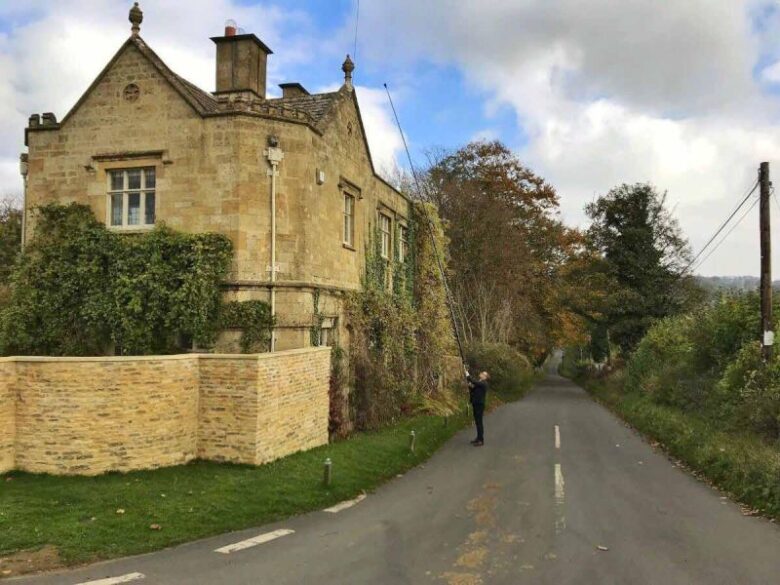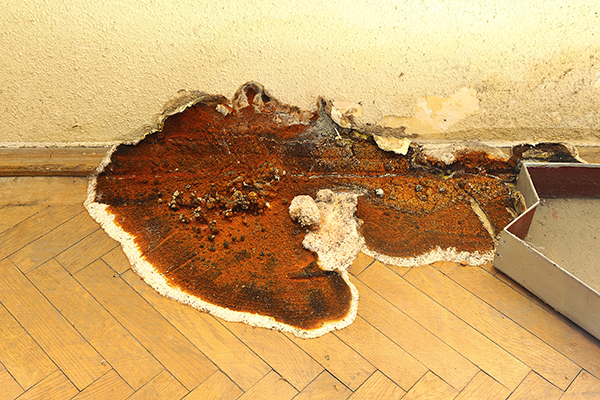
Common Issues Uncovered by Property Surveys
Whether you’re a first-time buyer, looking for your forever home or even downsizing, buying a new home is an expensive affair. From deposits and stamp duty to legal fees and removal costs, it can feel like you’re constantly paying out money to secure the property of your dreams. So it’s perhaps understandable then that some buyers can be tempted to forego a building survey to save some precious cash. Be aware, though; this can be a false economy as surveys are designed to highlight issues you need to know about before parting with your hard-earned money.
So, what exactly can you expect from a survey and what are some of the issues they often uncover?
Damp
Damp is one of the most common issues found by surveys. While you may think you’ll be able to see or smell any damp issues when you view a property, not only will a survey potentially identify areas you may miss, it will also determine the type of damp present and highlight how it can be resolved or if it warrants further investigation.
There are three main types of damp and how to fix each one will differ.
- Rising damp is caused by water from the ground working its way up through the brickwork. Key signs to look out for would be damaged skirting boards or floorboards, crumbling plaster and peeling wallpaper.
- Penetrating damp is caused by water leaking through the walls, usually through cracks in the brickwork. It’s identified by damp patches on the walls, floors and ceilings.
- Condensation is also a type of damp and very common in the UK. Caused when water vapour condenses on the walls, tell-tale signs are water droplets on the walls, damaged plaster and paint, and decaying window frames.
Dry rot
One issue caused by damp is dry rot, a fungus that grows on the timber within a property and weakens it. Condensation is often a cause, so this needs to be rectified to solve the problem – again, a survey will highlight this.

Drainage
Keeping with the theme of water, your survey will also check the state of your drainage. This includes whether your drains meet current regulations and if there are issues such as poor state of repair or visible blockages. Depending on the survey you opt for, the surveyor may also lift accessible inspection chamber covers and observe the normal operation of the services in everyday use to see that everything works as it should. Common issues spotted include blockages, root intrusion and leaks.
Roof issues
When it comes to the roof, a survey will look for everything from cracked tiles and wear and tear, to moss and debris build-up and guttering in need of repair. In addition to this, frequently identified problems include inadequate insulation and ventilation in roof spaces and blocked and overflowing gutters. Flat roofs often throw up issues such as water pooling or cracking too. In our case, we use specialist pole cams to get a clear view of the roof and any potential issues as well as infrared cameras to identify insufficient ventilation.
Asbestos
You may think you can see potential issues with your home simply by looking around, but one of the most dangerous, asbestos, will not fall into this category. While asbestos has been banned in the UK for many years due to its harmful nature, it is still found in homes, often without the owner even knowing it’s there, particularly in areas such as roof insulation. Therefore, if your survey finds signs of asbestos, a full asbestos survey will be recommended to investigate the issue fully.
Structural integrity
Signs of subsidence or structural movement, such as cracks in walls, are often identified by a survey. While small cracks are unlikely to be anything to worry about, your surveyor will highlight potentially more significant problems. Subsidence can be a particular issue in the London area due to large areas of clay subsoil, so it’s important to take expert advice in order to identify it early. If structural movement is highlighted, an expert investigation should be scheduled as soon as possible to see how seriously the building is affected.
Infestation
A survey will also highlight any signs of infestation – something none of us wants to think about – and we certainly don’t want to live with. Whether rats or mice in the home, woodworm in the timber or insects in the plants, a surveyor is trained to look for any invaders’ sights, sounds, and smells.
Japanese Knotweed
Interestingly, your surveyor will also take a look at your garden, where the state of retaining walls, drives, paths, patios, terraces, steps, dropped kerbs, gates, trees, boundary walls, fences, and non-permanent outbuildings will all be checked. The impact of trees and plants is a commonly highlighted issue, whether that’s trees planted close to your home where the roots could potentially cause a problem or even toxic plants. Some areas of South West London are also classed as hotspots for Japanese knotweed. This highly invasive plant can cause damage to buildings, landscaping and gardens, it’s difficult and expensive to eradicate, and if found, your lender may require an insurance guarantee in place before they’ll issue you a mortgage. One thing you’ll want to know about before you move in!

What do I do if any of these issues are highlighted in my survey?
The first step would be, don’t panic. While some of these issues can be major, they are all relatively common and can be rectified. The next step would be to call in the experts. So, if your survey highlights issues with the roof, look at getting a more thorough roof survey, so you’re fully clear on the extent of the problem; similarly, if subsidence is suspected, a full structural survey will bring clarity to the situation.
Once you have the details and an idea of costs associated with rectifying any problems, you may then want to renegotiate with the seller. Make sure you keep lines of communication open throughout the survey process, as this will mean everyone is fully informed and hopefully keen to move forward armed with all the information they need.
The Novello Approach
Novello offers several survey options so you can get the accurate, impartial and thorough information you need relevant to the style, age and condition of your property.
For older period homes or those in a poor state of repair, our comprehensive building survey will deliver a detailed report following a thorough inspection of the property, including the use of pole cams to access more challenging areas. We’ll also include photographs of any areas of concern and repair advice.
For more modern properties, our HomeLevel report could be just what you’re looking for. Economical in price but detailed in its findings, this report will assess the state of the property, highlight any repair or maintenance issues and determine the true value of your home.
Whatever survey you choose, you can be sure our RICS qualified, experienced and impartial surveyors will provide you with everything you need to proceed with confidence in an accurate, clear and easy to understand report. We’ll also deliver it to you via email in just a few days, helping you progress your purchase.
To find out more, read our advice on ‘Which survey do I need’, or get in touch today.

